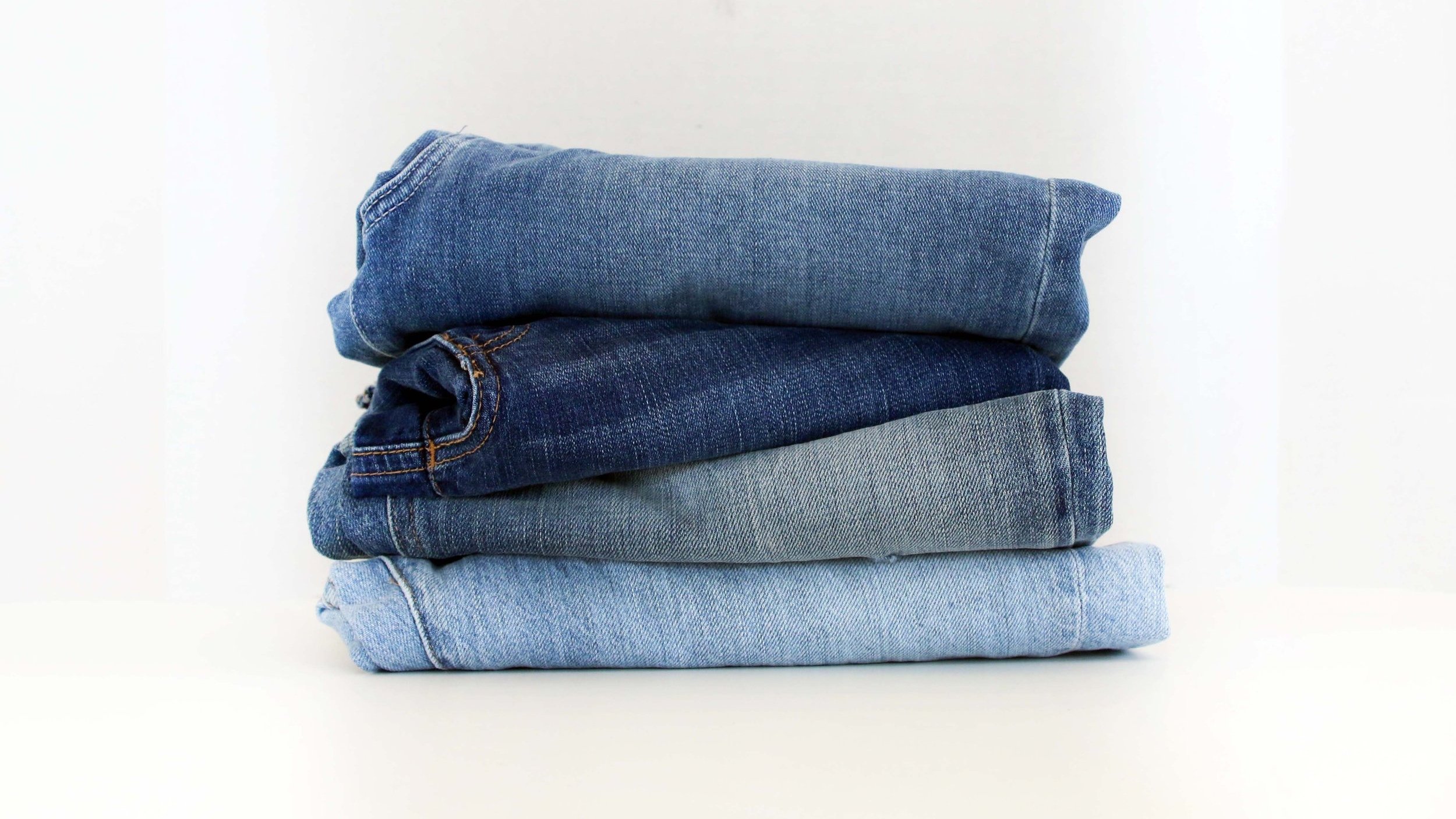The Environmental Impact of the Denim Industry
The article is not sponsored by any of the brands mentioned below.
Denim is a wardrobe staple for millions worldwide. People wear jeans, denim jackets, and other pieces so often that they take the material for granted.
However, very few have ever stopped to consider the environmental toll of denim clothing. The denim industry is notorious for its extremely high water usage, energy consumption, and chemical pollution. In fact, it is one of the most environmentally damaging sectors in the fashion industry.
From the vast quantities of water needed to grow cotton to the toxic chemicals used to dye and finish denim, the production of denim clothing has a significant impact on our planet.
In this article, we take a close look at the environmental impact of the denim industry and the damage it has caused for decades. We also explore some actionable ideas and sustainable practices that can help mitigate and minimize it.
First, let’s take a look at the factors that make denim production so bad for the environment.
How Denim Production Impacts the Environment
Environmental (un)friendliness is evident in just about every step of denim production, including cotton harvesting, spinning, drying, cutting, sewing, and finishing.
Here are some of the biggest issues that cause damage to the environment:
Water Consumption
As per Levi Strauss, over 3,780 liters of water are used to produce just a single pair of 501® jeans. This includes the water needed to grow cotton, which is a very thirsty crop, and the water required to process the fabric. Cotton irrigation makes up 92% of the water footprint of a pair of jeans and the remaining water consumption is related with production processes of denim fabric. Organic cotton unlike its regular cotton counterpart, requires less water - the average water consumption of organic cotton is 182 liters/kg lint, versus conventional cotton at 2,120 liters/kg lint (“Textile Exchange”, 2016). Organic cotton requires less water because it is mostly sustained by rain-water, compared to the irrigation systems necessary to water conventional cotton.
CARBON EMISSIONS
Each pair of jeans carries a heavy carbon footprint, which includes all stages of its lifecycle (from production through consumer use to disposal). Around 33.4 kg of CO2 is released throughout its lifetime, of those, 16.2 kg CO2 are estimated by Levi’s to be manufacturing emissions (i.e. created across the stages of fibre, fabric assembly, cut, sew and finish, sundries and packaging).
According to Oxfam, emissions produced manufacturing jeans are comparable to flying a plane around the globe 2,372 times or a petrol car travelling more than 21 billion miles.
Chemical Use
Denim production involves various harmful chemicals, including pesticides, fertilizers, dyes, and finishing agents that harm the environment.
For example, the use of synthetic indigo for dyeing jeans is quite toxic and persists in the environment. The finishing agents used to achieve a certain look or texture in one pair of pants contain hazardous chemicals like formaldehyde, which poses health risks to workers.
Waste Generation
According to studies, up to 20% of fabric is wasted in the production of denim clothing. Much of this waste ends up in landfills or is incinerated, contributing to greenhouse gas emissions and other environmental damage.
Additionally, denim production generates millions of liters of wastewater that contain harmful chemicals and dyes. Dyeing and washing processes are the catastrophe of denim production. Chemicals used in the dyeing process make the water unusable after the process. Huge amount of waste water, contaminated with toxic chemicals, is released into the environment. Unfortunately, rivers are running blue in most denim producing places. The contamination of soil and waterways has negative effect on both human beings, plants and animals at the surrounding areas.
Energy Consumption
Denim production is energy-intensive, particularly for spinning, weaving, and finishing the fabric. Much of the energy comes from fossil fuels, which contribute to greenhouse gas emissions and air pollution.
Fortunately, not all denim clothing causes quite this much damage every time. There are more and more brands that produce sustainable denim and help mitigate these issues, helping to create a more sustainable future for our planet.
The more sustainable ways of producing denim
Purchasing sustainable denim is a fashion statement and an imperative pro-environmental move. The brands mentioned below follow environmentally friendly denim production measures and here are some examples of how they go about it:
By using organic cotton grown without synthetic pesticides or fertilizers. Water consumption and chemical use are minimal, and these crops promote soil health and biodiversity.
Adopting water-saving techniques like ozone washing, which uses less water and fewer chemicals than traditional denim finishing processes. Laser technology is also being used—it reduces water usage by up to 90%.
Using natural dyes derived from plant sources, making their usage less harmful to workers and the environment. Eco-friendly raw materials like natural enzymes help create distressed or faded looks.
Using natural fibers, such as hemp or linen, in combination with cotton to create more sustainable denim clothing.
Adopting recycling initiatives to reduce waste, such as recycling cotton scraps or using recycled cotton fibers to create new denim products. Some brands create new products from old garments through upcycling.
Using renewable energy sources, such as solar or wind power, to run denim manufacturing plants. The fewer fossil fuels used, the better it is for the environment.
Ensuring the health, safety, and welfare of workers by adopting fair labor practices while providing safe working conditions, fair wages, and benefits.
Where To Buy Sustainable Denim/Jeans
By choosing to buy sustainable denim, you are supporting brands that are working to create a more sustainable future for our planet. They also work with factories and producers that provide fair wages, safe working conditions, and other crucial labor rights protections.
Here are some brands you should support:
TRIARCHY
Triarchy produces sustainable denim using a tencel/cotton blend. All the brand’s collections are produced with responsibly made fabrics and washed with sustainable laundry technology. Triarchy fully discloses the environmental impact of each stage of their supply chain which tells how much the brand cares and values sustainability.
AGOLDE
This brand’s premium denim products are made using organic regenerative and recycled cotton and are ethically produced in the USA and Turkey. All products are shipped in biodegradable packaging, making them an excellent choice for environmentally conscious consumers.
Outerknown
This brand prioritizes fair trade and ethical production practices. Outerknown is Bluesign certified and has partnered with the Fair Labour Association. Their denim products are made with eco-friendly, organic, and recycled materials—their 100% recycled denim line is a particular standout.
ABLE
ABLE sources their denim from partners in the western hemisphere to reduce our carbon footprint. In the design process, they select fabrics from mills that are developing sustainable denims. Their denim uses a liquid indigo that requires less water when being washed.
From the sourcing of raw materials to the creation of the final product, ABLE strives to minimize its environmental impact while empowering its female artisans through fair and ethical employment opportunities.
Switch to Sustainable Denim
Switching to second-hand or sustainable denim is a crucial step towards a more environmentally conscious wardrobe. It is a pro-Mother Nature move that can help mitigate the impact of the denim industry on our planet.
Support the change you want to see in the world.




